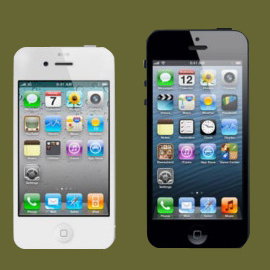 The Pew states more than half of adults in the United States now own a smartphone. The cost of not having a smartphone these days outweighs the cost of having a smart phone device. Social networking drove the rise and new smartphone and tablet apps are set to explode.
The Pew states more than half of adults in the United States now own a smartphone. The cost of not having a smartphone these days outweighs the cost of having a smart phone device. Social networking drove the rise and new smartphone and tablet apps are set to explode.
The Pew’s smartphone ownership report states that 56% of American adults now carry a smartphone according to this weeks report. Ranking the highest so far in smartphone saturation previous numbers were at 46% last year and 35% two years ago. A major milestone indeed. More than one third have a cell phone that isn’t a smartphone and 9% that don’t own a smart phone nor a cell phone.
Most telling were the ages 25-34 age range that claim an 81% ownership of smartphones. The highest ranking group in the report. Adults with higher income and urban area dwellers owned more smartphones than those in rural areas. It’s not just tech savvy users adopting either, today many jobs require the constant connectivity delivered by their smartphone. Many workers require the mobile devices for navigation or mobile payment services.
Security is an issue with early adopters in two ways. As mobile users fill their smartphones with personal and financial data, their smartphones become a target for hacking, especially if they use mobile banking services or shopping online via e-commerce, now known as m-commerce for mobile commerce applications. “Most financial apps already contain rock-solid security, but consumers seem not to be as plugged into the fact, and that knowledge gap can make all the difference in driving further usage and adoption.” said Anna Bager.
Social norms are changing due to smartphone usage as well. People checking their email at the dinner table has become the norm. Smartphones are routinely used as pacifiers to quiet the nagging child too.
The next wave of smartphone apps is sure to step up the level of usage from todays norm. Companies like Google, Amazon and Facebook are already working on smartphone apps from e-commerce and mobile payments to digital wallets and electronic transactions, entertaining games and digital media. Creative and unique services designed with smartphone users in mind will surely take a commanding lead. Moving forward ads and location based offers, mobile commerce and electronic payments and education applications will fall into the fold. Smartphone users also upgrade their smart phones more often than their laptop or personal computer ensuring this trend will continue in the near term.
 The Pew states more than half of adults in the United States now own a smartphone. The cost of not having a smartphone these days outweighs the cost of having a smart phone device. Social networking drove the rise and new smartphone and tablet apps are set to explode.
The Pew states more than half of adults in the United States now own a smartphone. The cost of not having a smartphone these days outweighs the cost of having a smart phone device. Social networking drove the rise and new smartphone and tablet apps are set to explode.